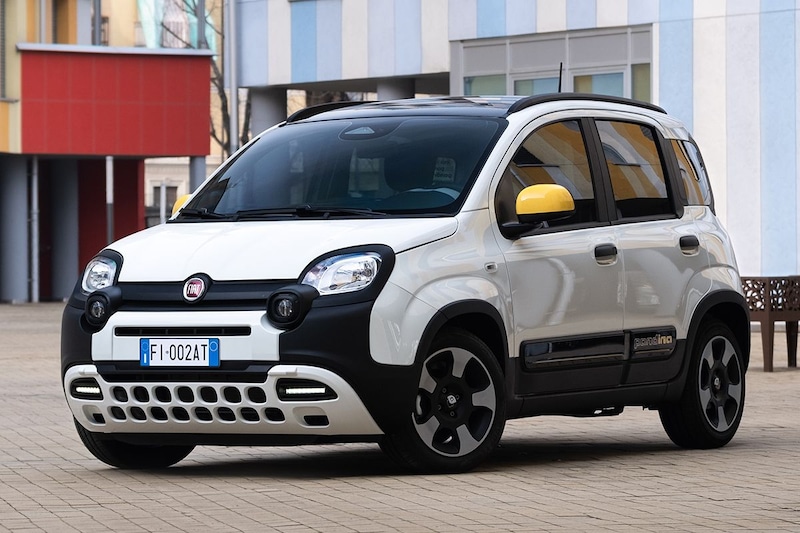Panda


Fiat will soon present a completely new and fully electric generation of the Panda. And what about the old one? It will continue to exist alongside it for at least a few years, but with a different name. The Fiat Panda as you know it now will be renamed Pandina. So panda.
There is a lot of bubbling going on at Fiat. It recently released the Fiat 600 and the electric 600e and the Italians recently opened a can of virtual study models that broadly showed what you can expect from the brand in the next three years. In July this year, Fiat will present a completely new generation of the Panda. This will be a technical sister model of the Citroën (ë-)C3. This means, among other things, that the new Panda, just like the Citroën, will be available with mild-hybrid and fully electric powertrains, but also that it will be unprecedentedly large for a Panda. And what about the now thirteen-year-old Fiat Panda? It will continue to exist for years to come. Until at least 2027, but perhaps even longer. No longer as Panda, but as Pandina. Fun fact: Fiat chose February 29 as the date to present the Pandina, because the original Panda was launched on that same day in 1980.
If the yet-to-be-revealed completely new and electric Fiat Panda will be about the same size as its French sister model, this means that you can expect a hatchback that is just over 4 meters long. That is unprecedentedly large for a Fiat Panda. For a clear distinction between the two Panda lines, the new model may be called Panda, the old and considerably smaller Panda with its length of 3.7 meters will be renamed Pandina. So panda. The fact that the Panda and the Pandina share nothing in common is also evident from the model’s birthplaces. The Fiat Pandina will continue to be produced in Pomigliano d’Arco, Italy, while the Panda will soon come from Serbia.
Modern systems
Yet more happens in the Fiat Pandina’s habitat. This does not stop at a name change of the model presented in 2011. The General Safety Regulation (GSR) that already killed cars like the Suzuki Ignis, hung like a sword of Damocles over the now Pandina Panda. This regulation, introduced by the European Union, sets stricter safety requirements for cars sold in the EU. The Panda had to be upgraded and now has new safety systems for the model, such as the Advanced Emergency Braking System, Lane Keeping Assist and a system that warns the driver of possible fatigue. Traffic sign recognition is also now available. The Pandina is available with an updated cruise control and parking sensors and automatic high beams.
Cheerful details
More news? Certainly. The Pandina has a new steering wheel and now has digital instruments. The display has a diagonal of 7 inches and has three adjustable themes. The dashboard itself – undoubtedly referring to the Panda, which only uses bamboo instead of petrol – is always in a black and white color scheme. Also new is the infotainment system with a 7-inch display. Just like the exterior, the interior is littered with cheerful Panda details. The model name Pandina can be found both on the outside and on the inside, including on the seats. Also standard on the Pandina: Panda faces on the hubcaps, yellow side mirror caps and Pandina lettering at the bottom of the doors. Fiat further introduces new colors. The Pandina is not only available in the existing colors Gelato White, Cinema Black, Passione Red and Italia Blue, but also in the new color Positano Yellow and in new two-tone color combinations with a black roof.
This is not the first time that two Pandas have coexisted. After the Panda, now named Pandina, was presented in 2011, its Polish-built predecessor continued to exist alongside it for a while as the Panda Classic. Since the introduction of the first generation Fiat Panda in 1980, more than eight million units have been sold worldwide. The market introduction of the Fiat Pandina will take place in the summer. That is why there are no Dutch prices yet.
– Thanks for information from Autoweek.nl

























